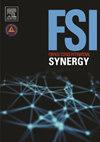核实在性侵犯转介中心内进行的亲密及非亲密脱氧核糖核酸回收
Q1 Social Sciences
引用次数: 0
摘要
本文描述了在英格兰和威尔士各地性侵犯转诊中心(SARCs)的法医检查设施中,在调查强奸和性侵犯中进行的DNA恢复过程的验证。这是为了支持红十字会的一项国家倡议,为法医完整性提供额外的质量保证。这是通过遵守法医科学监管机构(FSR)业务准则来实现的,包括ISO 15189医学实验室:质量要求;能力。现有的国家法医学院;法律医学(FFLM)推荐的亲密和非亲密DNA恢复过程在一项利用体内和体外测试的试点研究中得到了五个SARCs的验证。测试了三种类型的恢复场景:1)在模拟挣扎后,从志愿者的皮肤上进行非亲密性的触摸DNA恢复;2)在模拟皮肤表面非亲密性回收血液、精液和唾液;3)从妇科解剖模型中亲密地恢复已知的精液和唾液供体。在非亲密样品回收练习中没有观察到污染问题,其中恢复技术与现场案例工作相同。然而,与少数亲密的样本恢复,一些医源性转移的种子DNA在模型中被确定。数据的根本原因分析导致了一种新的方法的发展,用于培训和已知的结果能力评估,在亲密DNA恢复使用不可见的紫外线染料播种的妇科模型,以检测意外转移事件。这项核实工作促成了首个SARC能力测试计划的建立。本文章由计算机程序翻译,如有差异,请以英文原文为准。
Verification of intimate and non-intimate recovery of DNA within Sexual Assault Referral Centres (SARCs)
This paper describes the verification of DNA recovery processes undertaken in forensic medical examination facilities within Sexual Assault Referral Centres (SARCs) across England and Wales in the investigation of rape and sexual assault. This is in support of a national initiative for SARCs to provide additional quality assurances regarding forensic integrity. This is achieved through compliance with the Forensic Science Regulator (FSR) Code of Practice including accreditation to ISO 15189 Medical Laboratories: Requirements for Quality & Competence.
Existing national Faculty of Forensic & Legal Medicine (FFLM) recommended intimate and non-intimate DNA recovery processes were verified by five SARCs in a pilot study utilising both in vivo and in vitro testing. Three types of recovery scenarios were tested: 1) non-intimate recovery of touch DNA was undertaken from volunteers’ skin following simulated struggles; 2) non-intimate recovery of blood, semen and saliva on simulated skin surfaces; 3) intimate recovery of known semen and saliva donors from gynaecological anatomical models. No contamination issues were observed in the non-intimate sample recovery exercises where the recovery technique is the same for live casework. However, with a minority of the intimate sample recoveries, some iatrogenic transfer of seeded DNA within the models was identified. Root cause analysis of the data led to the development of a new approach for training and known outcome competence assessment in intimate DNA recovery using gynaecological models seeded with invisible UV dyes to detect unintended transfer events. This verification exercise has led to the creation of the first SARC proficiency testing scheme.
求助全文
通过发布文献求助,成功后即可免费获取论文全文。
去求助
来源期刊

Forensic Science International: Synergy
Social Sciences-Law
CiteScore
4.90
自引率
0.00%
发文量
75
审稿时长
90 days
 求助内容:
求助内容: 应助结果提醒方式:
应助结果提醒方式:


